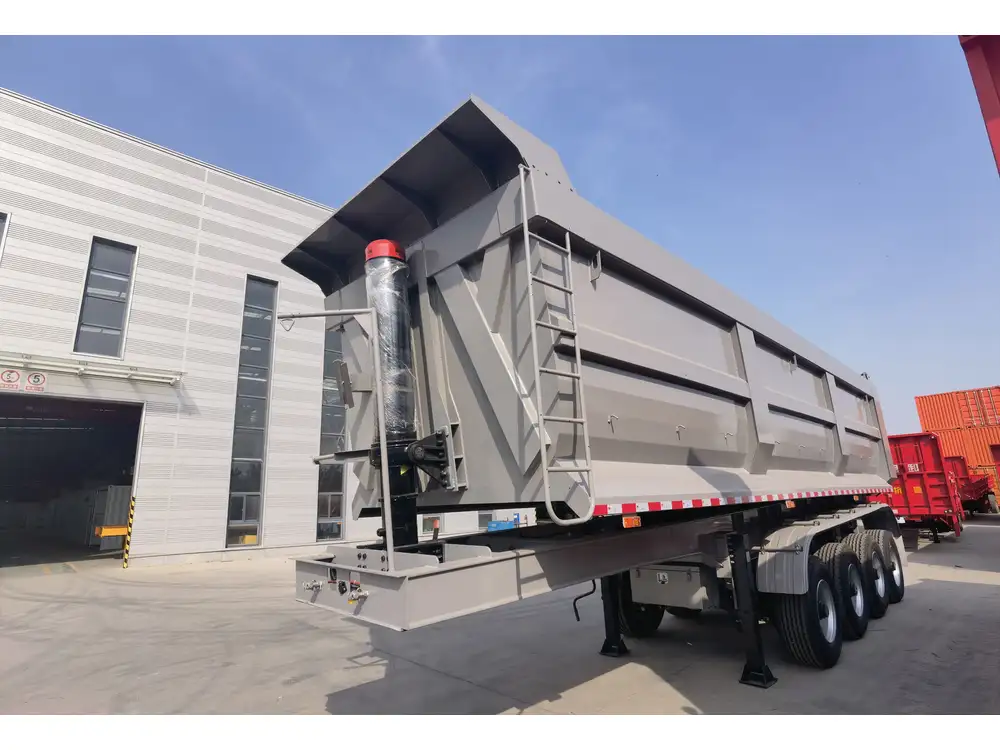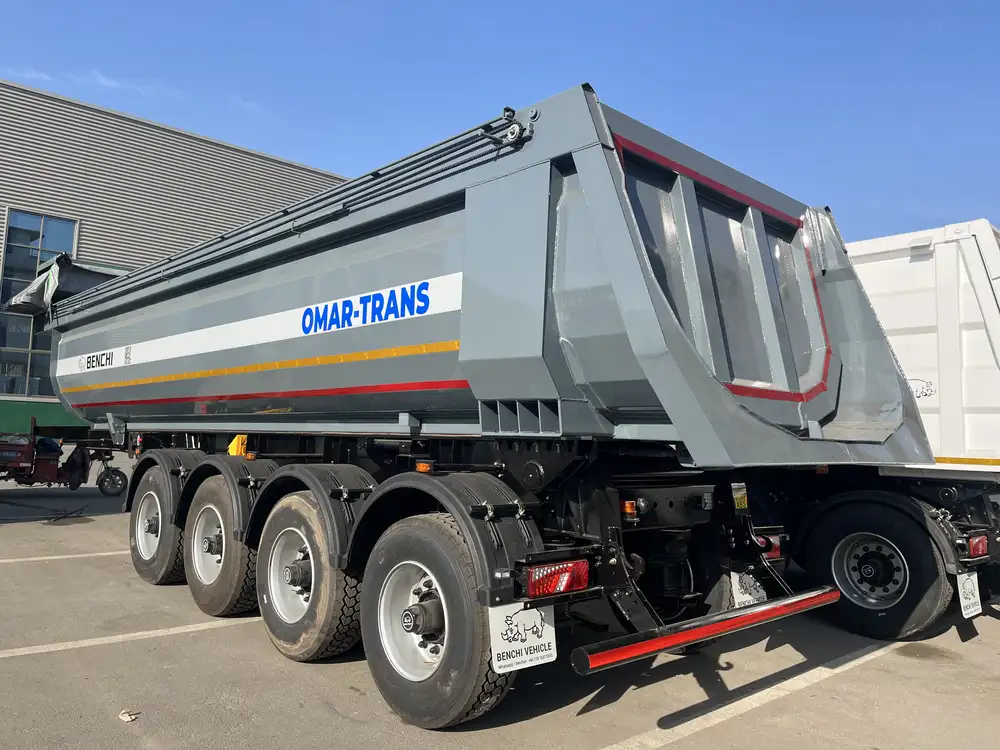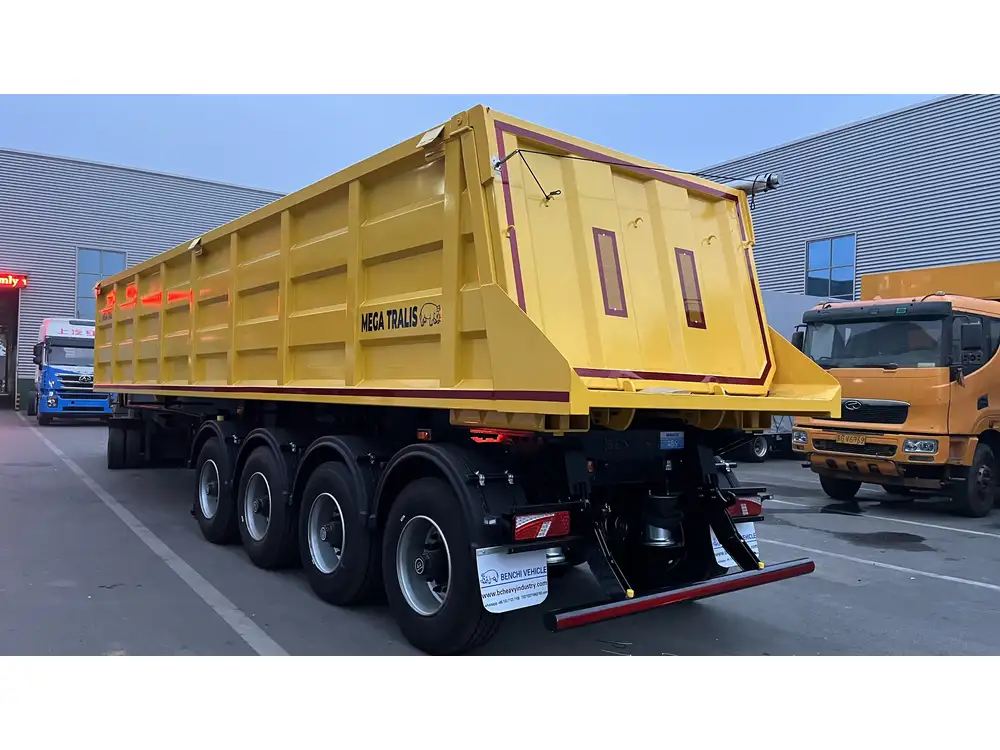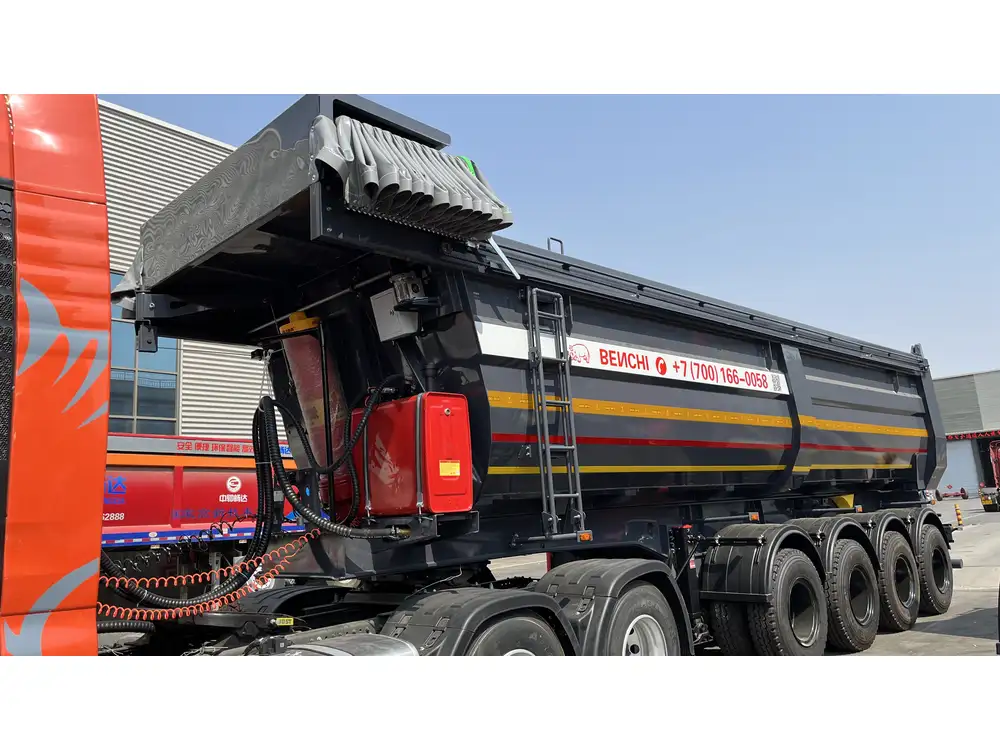When it comes to the world of transportation, semi-trailers play a pivotal role in the logistics and freight industry. The significance of this vehicle type cannot be overstated, as it optimizes the movement of goods across vast distances. This article aims to decode the intricacies of semi-trailers, addressing various aspects such as types, construction, uses, and maintenance, all while solidifying our understanding of what a semi-trailer is truly called.
What is a Semi-Trailer Called?
A semi-trailer, in the most basic sense, is a trailer whose forward part is designed to be coupled to a tractor unit. Unlike conventional trailers, semi-trailers lack a front axle. This design allows them to load a significant volume of cargo while maintaining stability during transit. In different regions and contexts, semi-trailers may also be referred to as:
- Saddle Trailers: Highlighting the hitch mechanism used to connect them to the towing vehicle.
- Skirted Trailers: Often used for aerodynamic benefits, these trailers come equipped with side skirts designed to improve fuel efficiency.
- Flatbeds: A type of semi-trailer characterized by its flat deck, allowing for various loading configurations.
Each of these terms reflects a unique aspect of semi-trailers, illustrating the diversity within this category of vehicles.
The Anatomy of a Semi-Trailer
Understanding the components of a semi-trailer can enhance our knowledge of its functionality and usability. Key components include:
| Component | Description |
|---|---|
| Deck | The base area where freight is loaded; can be flat, enclosed, or open. |
| Kingpin | The pivotal point that connects the semi-trailer to the tractor unit, allowing for articulation. |
| Axles | Essential for load support and stability, typically ranging from one to three axles. |
| Suspension | Diverse systems (leaf spring, air ride) that absorb shocks and maintain cargo integrity during transit. |
| Brake System | Critical for controlling speed and handling; includes air brakes for larger loads. |
These components work synergistically to ensure that semi-trailers can carry heavy loads while remaining safe and efficient on the roads.

Various Types of Semi-Trailers
One of the most fascinating aspects of semi-trailers lies in their variety, tailored to meet specific transportation needs. Here, we delve into the major categories of semi-trailers:
1. Flatbed Semi-Trailers
These trailers feature a completely flat platform, making them versatile for transporting goods such as construction materials, machinery, and oversized items. With no sides or roof, flatbeds allow for easy loading and unloading.
2. Reefer Semi-Trailers
Equipped with a refrigeration unit, reefer trailers maintain low temperatures to preserve perishable goods. They are essential for transporting food items, pharmaceuticals, and temperature-sensitive products.

3. Dry Van Semi-Trailers
Often seen on highways, dry van trailers are fully enclosed, protecting cargo from external elements. They are ideal for transporting packaged goods and non-perishable items.
4. Tanker Semi-Trailers
Designed for fluid transportation, these trailers specialize in carrying hazardous or non-hazardous liquids. Tanker semi-trailers come with specific safety features to prevent spills and ensure safe delivery.
5. Lowboy Semi-Trailers
With a low deck height, lowboy trailers are perfect for hauling heavy equipment and machinery. Their design allows for greater stability while transporting oversized loads.
| Type of Semi-Trailer | Cargo Type | Key Features |
|---|---|---|
| Flatbed | Construction materials, machinery | Open platform, versatile loading/unloading |
| Reefer | Perishable goods, pharmaceuticals | Temperature control, insulated walls |
| Dry Van | Packaged goods, non-perishables | Enclosed protection, easy to secure |
| Tanker | Liquids (hazardous/non-hazardous) | Specialized safety features, pumping systems |
| Lowboy | Heavy equipment, oversized loads | Low deck height, excellent stability |

Advantages of Using Semi-Trailers
The efficiency and effectiveness of semi-trailers in the logistics industry cannot be ignored. Here are some distinct advantages that contribute to their popularity:
1. Higher Cargo Capacity
Semi-trailers are designed to maximize cargo space without compromising safety and stability. Their ability to transport more weight per journey reduces overall transportation costs.
2. Versatility
The range of trailer types allows for specialization. Businesses can choose the type of semi-trailer that best suits their goods, whether it be a reefer for perishables or a flatbed for bulky items.

3. Increased Maneuverability
Due to their design, semi-trailers can be more maneuverable than standard trailers, especially when navigating tight spaces. The articulated connection enhances their ability to turn and operate in crowded areas.
4. Durability and Longevity
Manufactured from robust materials, semi-trailers are built to withstand harsh conditions and heavy usage. Proper maintenance can extend their lifespan significantly.
5. Cost-Effective Transportation
Despite the initial investment, semi-trailers offer lower operational costs over time. Their design enhances fuel efficiency and reduces maintenance expenses.

Maintenance Essentials for Semi-Trailers
While semi-trailers are designed for durability, regular maintenance is crucial to ensure safety and efficiency. Here are maintenance tips to consider:
1. Routine Inspections
Regular inspections of critical components—such as brakes, tires, and lights—are essential. Addressing issues early can prevent costly repairs down the line.
2. Tire Maintenance
Tires must be checked for proper inflation and tread wear. Uneven or worn tires can lead to dangerous driving conditions and increased fuel consumption.

3. Brake System Checks
Ensuring that the braking system is functional is paramount. This includes inspecting air lines and ensuring that brakes are responsive.
4. Kingpin and Coupling Device Check
The kingpin should be inspected for wear, ensuring a secure connection to the tractor unit. A secure coupling device is vital for safety during transit.
5. Cleaning and Protection
Regular cleaning helps prevent rust and other forms of deterioration. Applying protective coatings can extend the lifespan of trailer components.
| Maintenance Task | Frequency | Importance |
|---|---|---|
| Routine Inspections | Monthly | Prevents breakdowns and ensures compliance |
| Tire Maintenance | Bi-monthly | Enhances fuel efficiency and driving safety |
| Brake Checks | Monthly | Critical for vehicle safety |
| Kingpin Inspections | Every trip | Ensures secure hitching and prevents accidents |
| Cleaning | Quarterly | Prevents rust and extends component lifespan |

Addressing Common User Questions
What Is the Average Cost of a Semi-Trailer?
The price of a semi-trailer can vary widely based on type, condition (new vs. used), and specifications. On average, new semi-trailers range from $30,000 to $70,000, while used models can be found for varying prices depending on age and maintenance history.
What Makes a Semi-Trailer Different from a Regular Trailer?
Semi-trailers differ primarily in their construction. Their lack of a front axle allows for a more significant weight distribution and improved maneuverability when coupled with a tractor unit. Regular trailers have axles at both ends and are towed behind vehicles without articulated connections.

Can a Semi-Trailer Be Used for Different Types of Cargo?
Yes, one of the key advantages of semi-trailers is their adaptability. With various designs such as flatbed, enclosed, or refrigerated, semi-trailers can be tailored to transport different types of cargo effectively.
Are Specialized Licenses Required to Operate a Semi-Truck and Trailer?
Yes, in most regions, a Commercial Driver’s License (CDL) is required to operate a vehicle that includes a semi-trailer. Additionally, drivers must meet specific regulatory and safety requirements.
Conclusion
In summary, understanding what a semi-trailer is, its types, advantages, and maintenance practices empowers businesses and individuals in the logistics sector. As transportation needs continue to evolve, semi-trailers will remain an indispensable component of global supply chains. Their versatility, efficiency, and reliability encourage ongoing advancements in the way goods are transported across continents. For manufacturers, suppliers, and users alike, engaging with the intricate dynamics of semi-trailers holds the key to optimizing logistics and ensuring responsive service delivery in the ever-demanding world of transport.
Whenever you encounter a semi-trailer on the road, recognize it for the crucial role it plays in connecting economies, facilitating commerce, and driving the pulse of industries across the globe.



